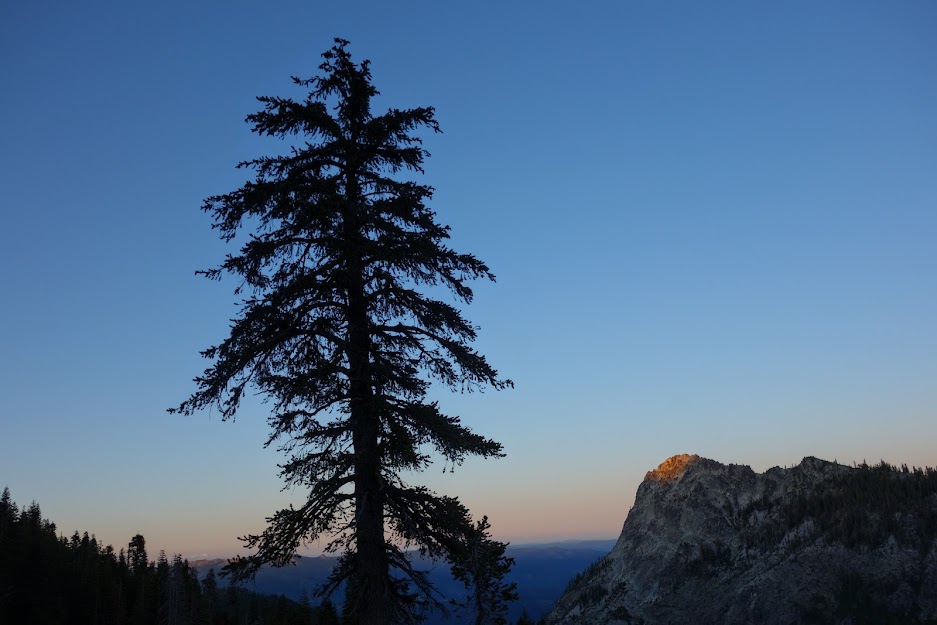Rather than WOW per mile views, on this trip you get WILD per mile experiences. You’ll earn your views and grub by navigating your way through overgrowth, tree debris fields, and faint to non-existent trails. This is a place to find solitude. Over 5 days I crossed paths with 5 hikers. Intrigued? 
I read somewhere that conditions had been improved on the Lilypad Lake/Thumb Rock Loop somewhat recently. I found a few cut logs as evidence on the way up to the junction. The trail steadily climbs from 4,100′ elevation at the trailhead to finally this first view of Ycatapom Peak. 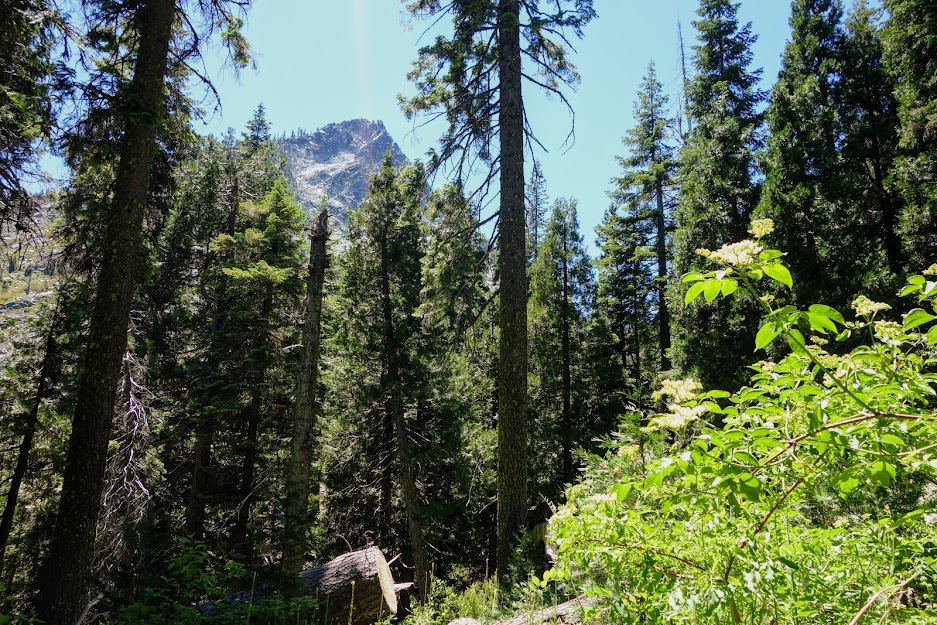
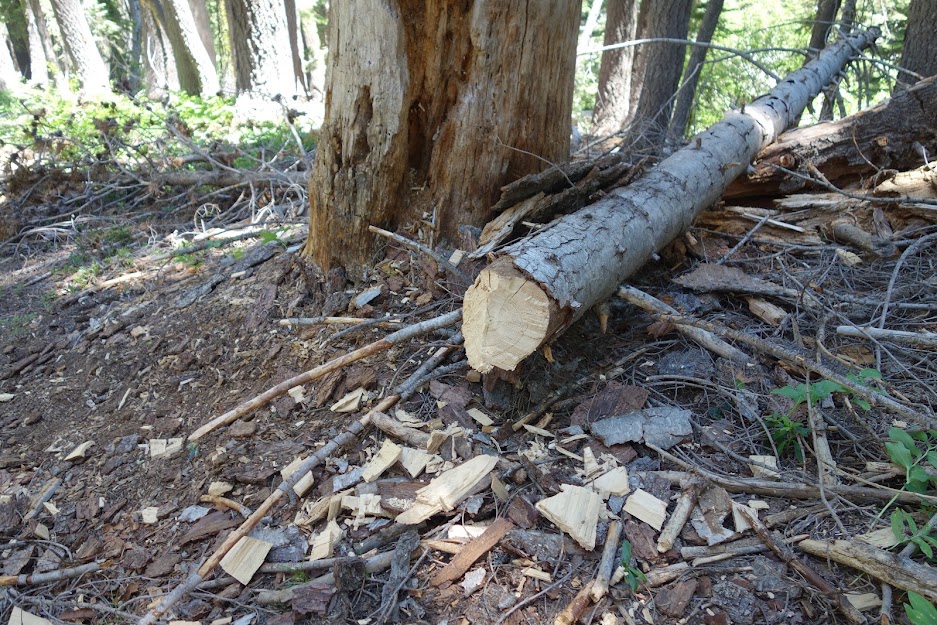
While getting slapped in the face a few too many times as I worked my way through the low elevation foliage, I was rewarded with these late spring early summer blooms.
Bleeding Heart
Western Prince’s Pine 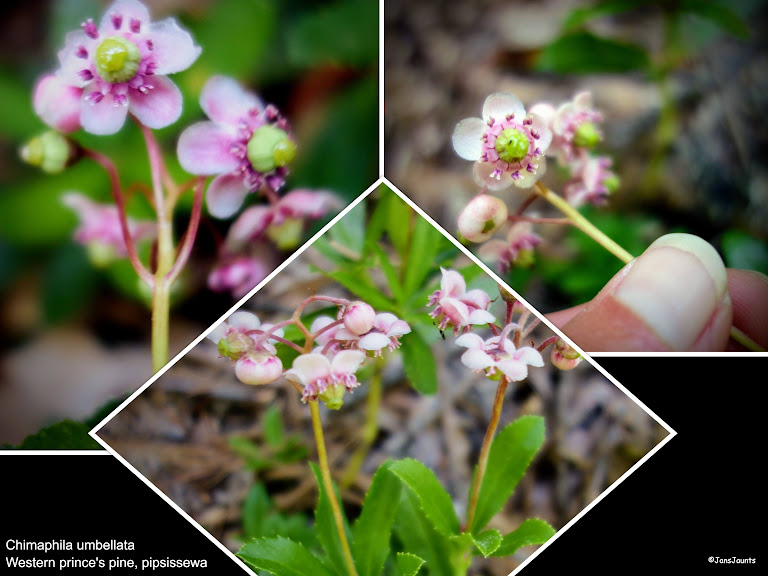
Leopard Lily
At 2.8 miles, having gained nearly 1,900′ in elevation, you reach the trail junction to Lilypad Lake and Thumb Rock. Since I hiked the loop in 2014 (blog link) I continued on the Poison Canyon Trail. Having now climbed 2,700′ in 4 miles you arrive at Tracy Trail to Boulder Lake junction. Not too much later you are granted this view of Lilypad Lake (bottom left), Thumb Rock and the beautiful hanging meadows. 
To complete the panoramic view, Ycatapom Peak with Lilypad Lake visible in the lower middle. Trinity Lake is in the valley below.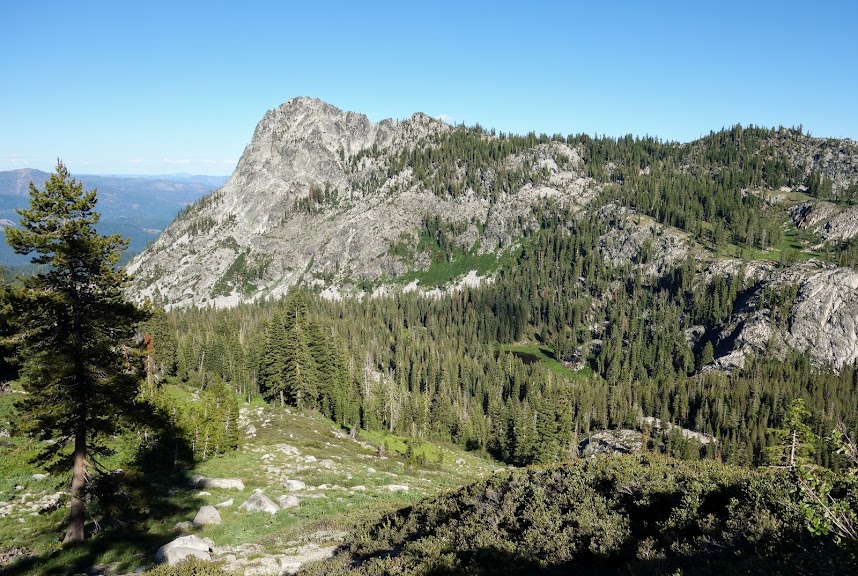
Water becomes sparse and you may limited to meadow puddles in the early summer. 
Given my late start and the upcoming water situation, I decided to camp before the ridge. It was breezy and chilly, ending with a 29F degree low and a frosty sleeping bag since I chose not to use my rainfly. 

I got an early start the next morning and was treated to views of Mt Shasta as I climbed toward the Parker/Union Divide. 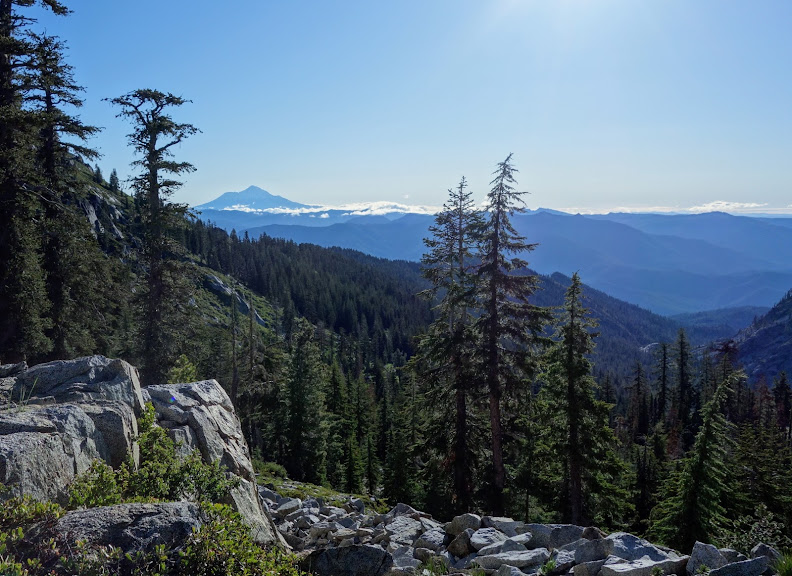
The views from the divide were impressive. At this point I was 5 miles and 3,500′ into my trip. 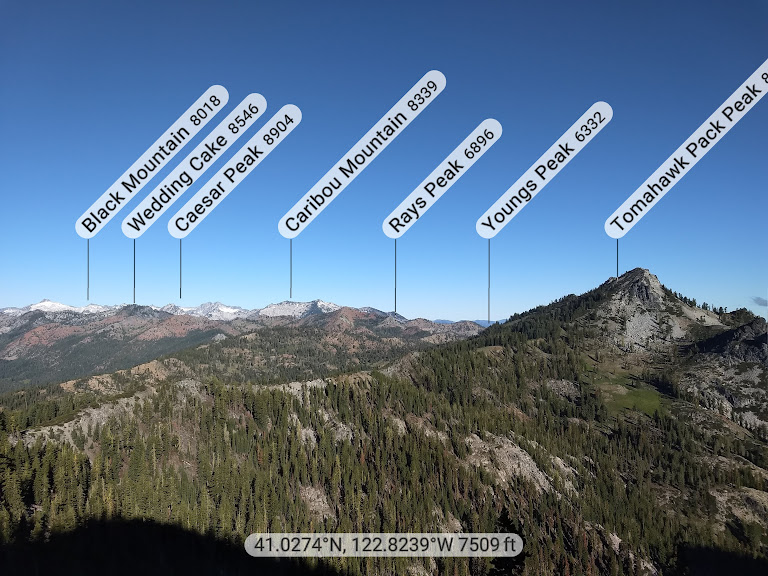
Landers Lake
My next destination was Landers Lake which is located in the crown of mountains in the middle of this photo. Red Rock Mountain (not to be confused with Red Mountain) is the dominant peak surrounding the lake. As is true within the Trinity Alps, what goes up must go down, sadly with little room to roam at the top. My original goal was to make it to the lake for my first night but between the elevation gain, trail conditions and water situation, it wasn’t in the cards. 
This was a fun part of the trail where you got to stay high before dropping into the valley. It reminded me a bit of Knife’s Edge in Washington’s Goat Rocks Wilderness. In my perfect world, there would be lots more of this in the Trinities. 
As I started my descent I found this lovely meadow of corn lilies not yet ready to bloom. 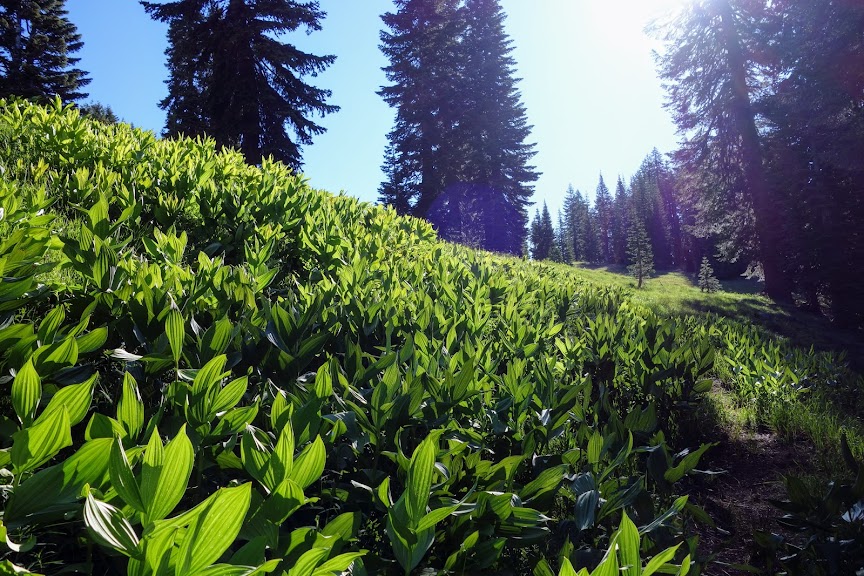
I was thrilled to find the first-of-the season blooms on owl’s clover. 
These were one of the predominant blooms on this trek. Too many similar blooms to identify for this extreme amateur botanist. 
At 8 miles I reached the junction to Landers Lake. 
I attempted to reach the lake during my late April trip up Swift Creek, but there was too much snow (blog link). 
Looking back from where I’d come. 
The colors and textures of these rocks is eye candy to this want-to-be geologist. 
And finally I arrived at lovely Landers Lake, 4,200′ and 10.5 miles from the trailhead (plus a 1,300′ descent). Red Rock Peak looks tiny in the background. For those more nimble than I, you can skip a few miles scheduled for my next leg of this journey by going over the shoulder rather than taking the trail. 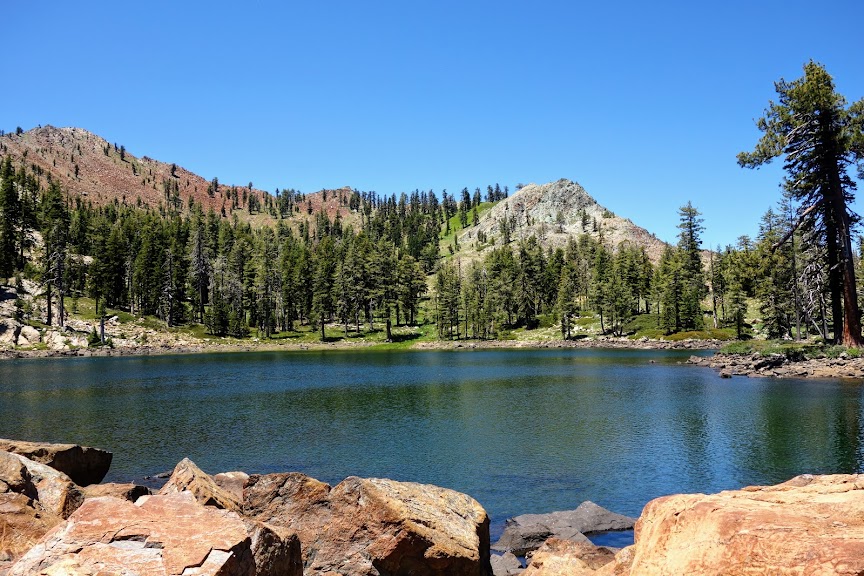
Although it was quite early, I decided to spend the night as the next leg had water issues and more elevation gain than I was ready to tackle. So I wandered around enjoying the fluttering butterflies and warm sun, although the breeze made it too chilly for a dip. 
Red Rock Mountain’s namesake red was very apparent in the early morning light. 
Historical Mining Trail Loop
The next leg included the Sunrise Creek, Yellow Rose Mine and Dorleska Trails. I wanted to take one of two short cuts, but I knew from my experience it would end up wasting more time and energy than just taking the trail which meant descending before regaining that elevation. In retrospect I was happy with my decision when I saw I would have had to go through a huge ravine as well as deal with brush. So at 12.7 miles from the Poison Canyon Trailhead, I connected with the Sunrise Creek Trail. 
There were a few wildflowers at around 6,000′ including these Mariposa Lilies.
Bog Orchid
Let the fun begin. Where oh where does the trail go? If I were a trail were would I be? Shall I go through the swamp or the bushes? At least these were short enough they didn’t slap me in the face like I found at the 4-5000′ elevation. 
If you’re lucky you might find an old blaze on a tree, like this one without bark. How much longer will that tree be standing? 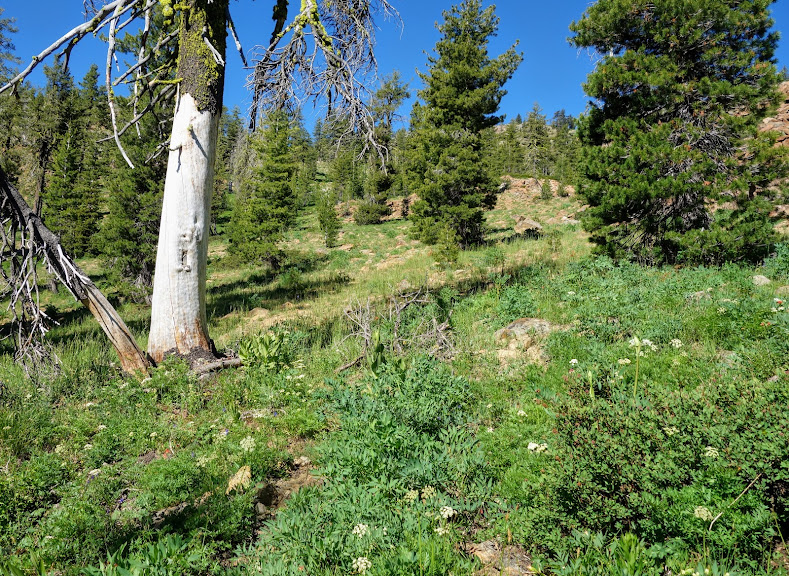
Look at those wide open views with plentiful opportunities for exploring. 

At 14.5 miles with 5,500′ of elevation gain and 2,300′ of loss, I arrived at the Yellow Rose Mine Trail. 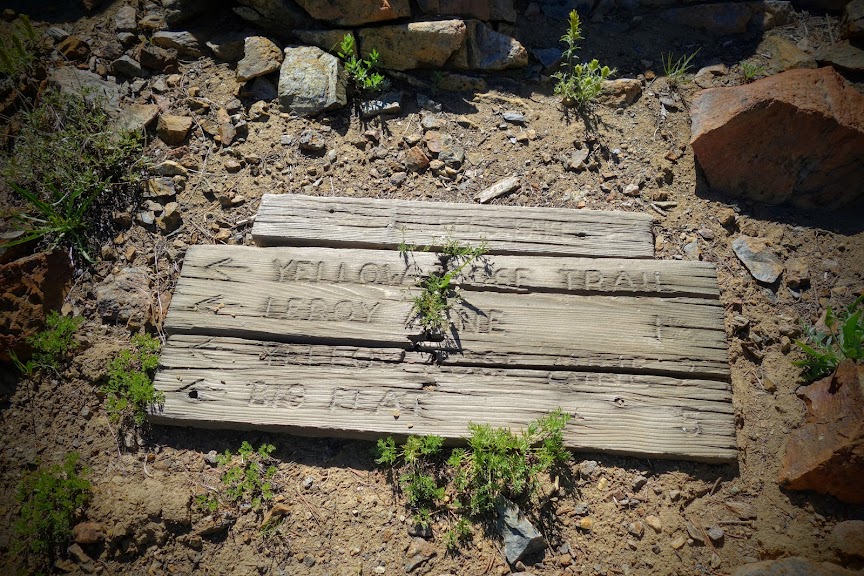
This notch is the shortcut route to Landers Lake. Doesn’t look too bad from this side. Red Rock Mountain is the left peak.
While many hike this loop to see the mining relics, my primary purpose was to see the mountains that flank the Salmon River drainage including the likes of this, Caribou Mountain and Sawtooth Ridge.
A recent hike included a trip to Horse Heaven, the high point above Tri-Forest Pass (blog link), the knoll at the far end of Sawtooth Ridge. 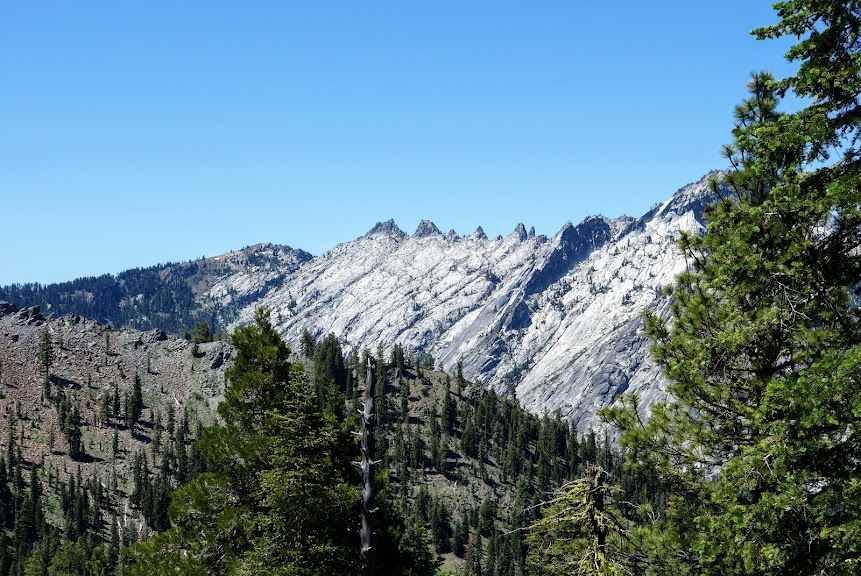
As you continue along the trail the views get better and better. This is Caribou Mountain with mostly private Josephine Lake easily visible in the middle of the photo. The Caribou Lakes basin is on the other side of the ridge. I believe that’s Caesar Cap Peak in the background, but it might be Thompson Peak. 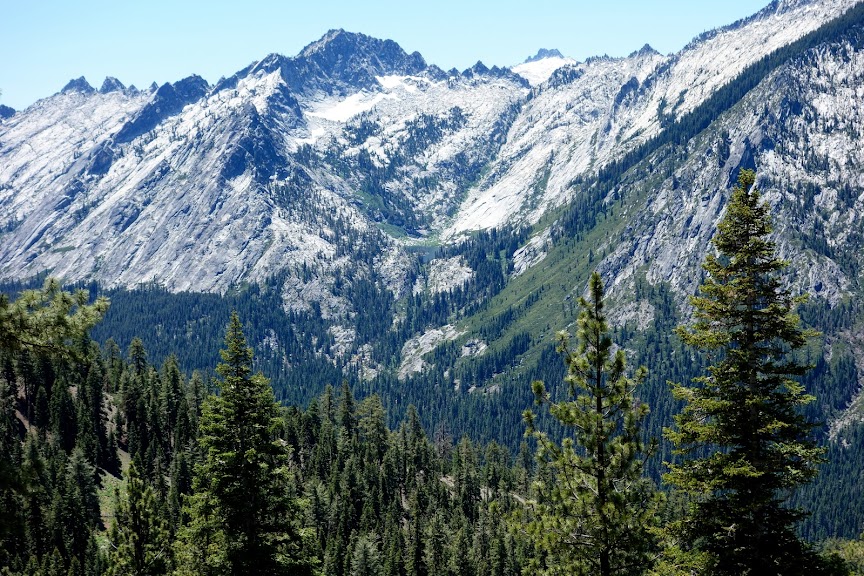

Preachers Peak at 7,202 look pretty unimpressive and easily baggable at the ridge between Yellow Rose and Dorleska Mines. Wonder who this Preacher dude was as there’s not only a peak but also a campground named after him. 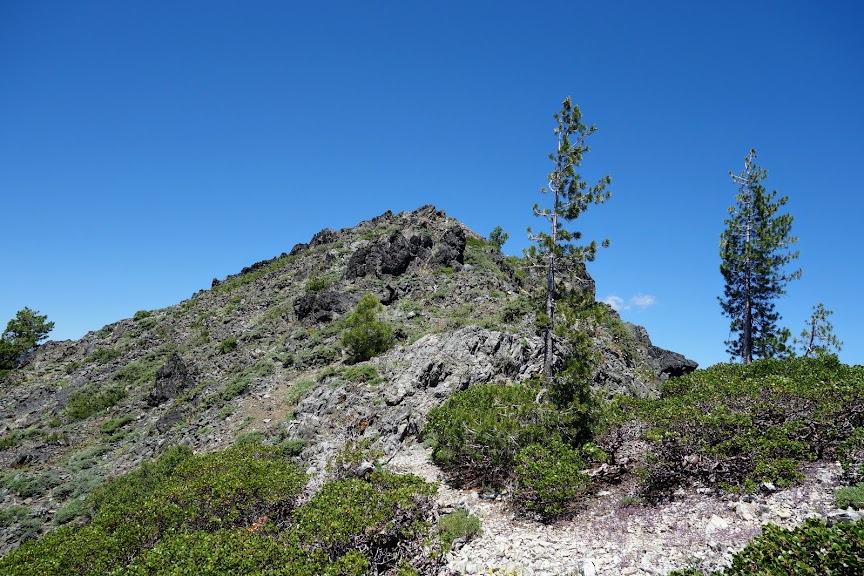
This was the first mining site I encountered except for a couple small pit mines with nothing that caught my eye worth sharing. I believe these are the remains of the Le Roy Mine. This USGS report (link) has some information regarding the mines. See page B131. 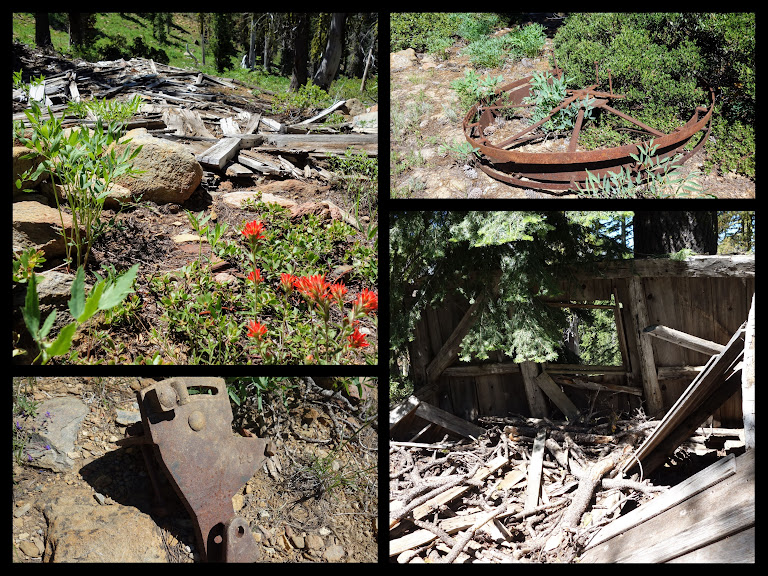
I believe these are the remains of the Yellow Rose Mine. This USGS report (link) has some information regarding the mines. See page B127. 
The Dorleska Mine sites were spread over several areas. Additional information can be gleaned from the document referenced above, same page as Yellow Rose Mine. It’s hard to imagine hauling all this equipment up these steep trails, made more for mules than humans, but back in the late 1800’s miners were made of hardy stock but by 1938 they were ready to leave it all behind. 
This pond just below Dorleska will forever hold negative memories.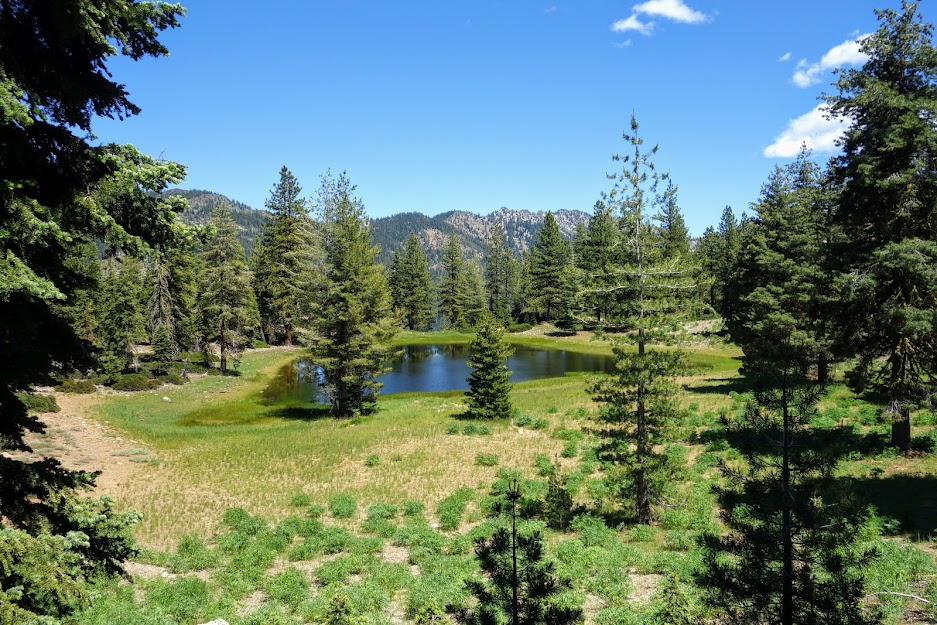
I found myself flailing through deadfall on a steep slope and as I exited the shade, I realized my hat was gone. What? NOOOOOO! I usually have it tethered to my pack for this very reason. So back up to the ridge I went, searching searching searching and calling out to my hat, “BLUE oh BLUE where are you?”
Finding myself out of luck and a little mournful as I said goodbye to my old friend Blue. As I headed down toward Bullards Basin, I found this lovely meadow of Blue-Eyed Grass. It helped me deal with my loss. 
Foster, Lion, Conway and Big Boulder Lakes
After 21.5 miles with 6,300′ elevation gain and 4,600′ loss, I reached the junction for the Lion Lake Trail, bypassing options to Union Lake. 
I got an early morning start climbing up the ridge. I was greeted by this meadow of Cow Parsley. 

I had awesome views looking back at Red Rock Mountain and the ring of peaks hiding Landers Lake.
Looking back I can see down to where I camped the previous night, the drainage leading around the bend to those views of Caribou Mountain and of course Red Rock Mountain with Landers Lake in the front and the mines on the other side. You can’t see in this photo, but there is a huge swath of headless trees which I’m assuming are the result of an avalanche at some point in the past. 
Finally I was back at Foster Lake, a place I’d visited in 2014 on my loop hike from Boulder Lake trailhead to Foster Lake, then down to Thumb Rock and Lilypad Lake before returning to the trailhead (blog link).
It was time to try out my invention. My eyes are extremely sun sensitive and knew I’d suffer without a visor. So as I was packing I placed my Nat Geo map inside a gaiter which went inside another gaiter. They have elastic cords at one end that usually hold them up and I was able to attach those to my ponytail, using a buff to keep it on my head. I’m happy to report it worked well for my final two days, never bouncing around or falling off. Function wins over fashion!
The trail building efforts from years begone through the granite have remained firmly in place. The staircases are much appreciated. 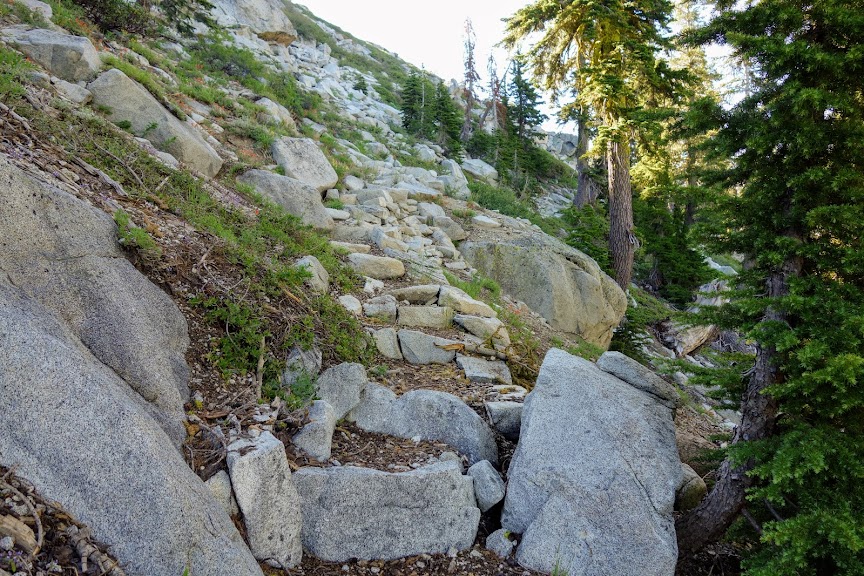
However, the trail traversing along Lion and Conway Lakes is quickly becoming more of a deer path rather than one for human use. If you have exposure and sideslipping trail issues, I’d have second thoughts. 
I loved this stretch showcasing nature’s gardening.
As I dropped elevation I was faced with more down trees, blow down and overgrowth. There was one obstacle so large there wasn’t safe passage but I had to figure out a way and take my chances. This trail needs some love. I was feeling pretty grumpy coming into Big Boulder Lake. I was prepared for it to be busy as it’s very near the Boulder Lakes Trailhead. Upon arrival there was an obnoxious couple cussing up a storm and a group camped on a distant shore. I wandered the shoreline looking for a place I could access the lake for a swim. No real options except in the overused camping area so back I went. As I was getting ready to swim several other groups arrived. One group decided to start a fire. It was 2pm and hot enough to want to be in the shade. What’s next? That’s right the stereo is fired up and the booze comes out. Yep that was my cue to get myself up the trail. On a positive note the swim was invigorating and a few of the lilies were blooming but they were too far from shore to get a photo. 
My original plan had been to go off trail to Tapie, Lost and Found Lakes which are hidden behind the granite mounds to the left in the below photo; Big Boulder Lake is in the middle. Since my route had been much more challenging than anticipated, I was not only short of stamina but was also on food rations. I noted the jump off point for a future trip.
Instead I decided to spend the night on the ridge, enjoying a few hours with Mt Shasta and capturing this wonderful sunrise. 
With my rationed food selection, it was time to chow and start the long downhill descent. 
The bears seem to like this brushy canyon. This was about the freshest pile I’ve seen. Once before I came upon a pile still steaming, but this one was still had a nice urine ring. I saw another pile about a mile later. Never saw a bear but saw plenty of evidence throughout this route. 
The next section of trail was through more down trees, blow down, overgrown bushes, through meadows, etc. I was so tired of getting slapped in the face with branches and having my face draped with webs. But I survived and lived to tell this story. There is no better way to end this post than with a few more of the blooms I saw on this lollipop loop route.


Followed by a well deserved meal. 
Adventure Dates:
Hike Details:

Resources:
Links:
Disclosure: Amazon affiliate links may be included which provide me a tiny kickback to help pay for this site.